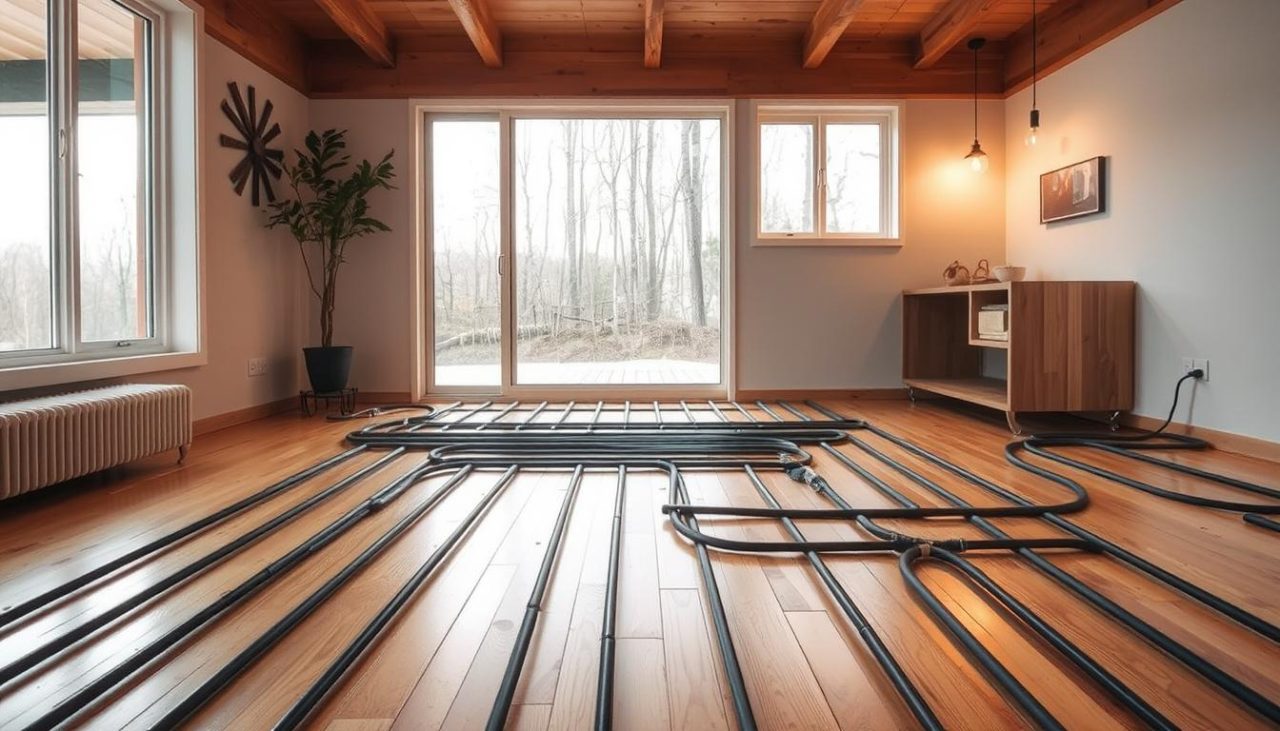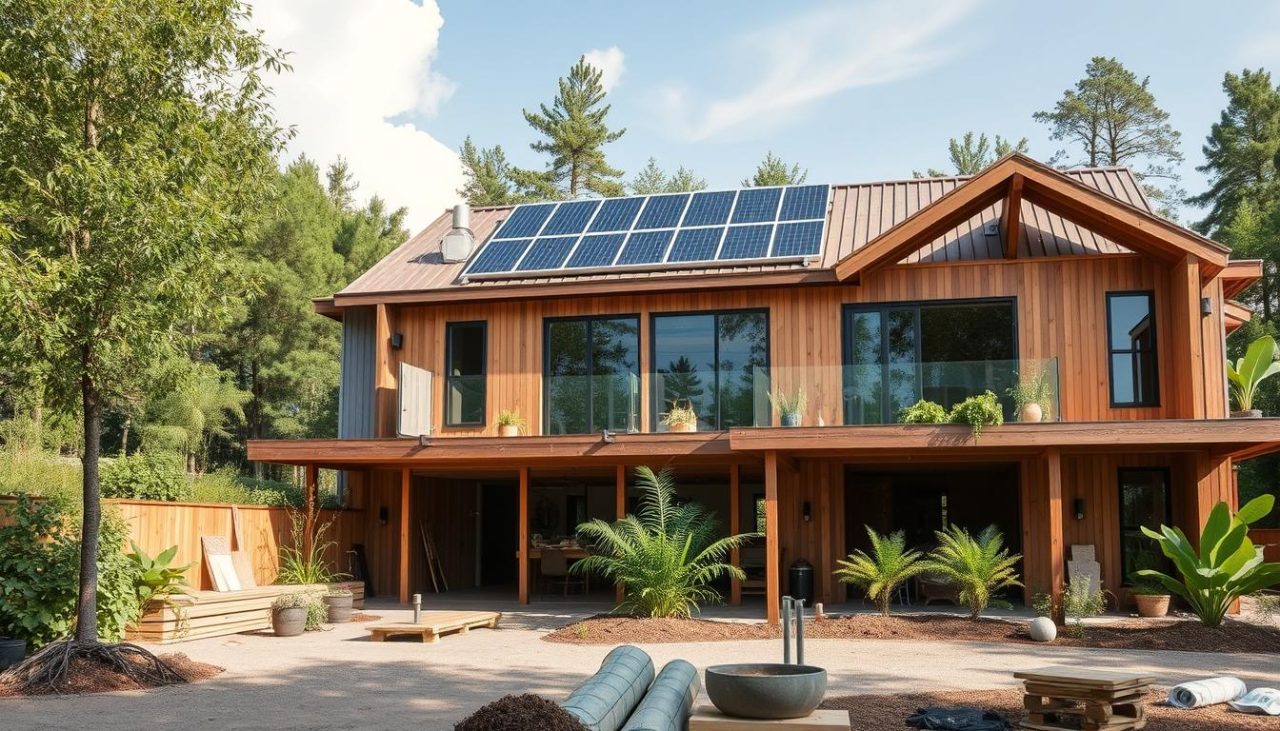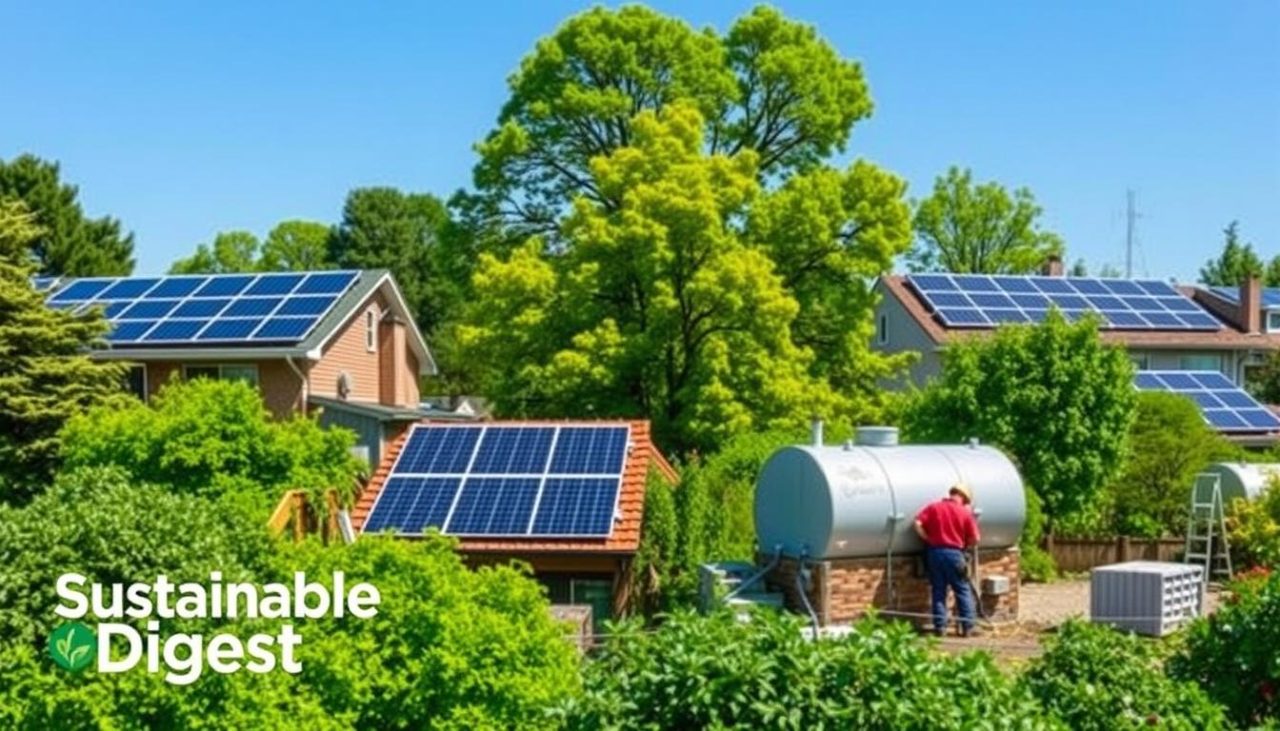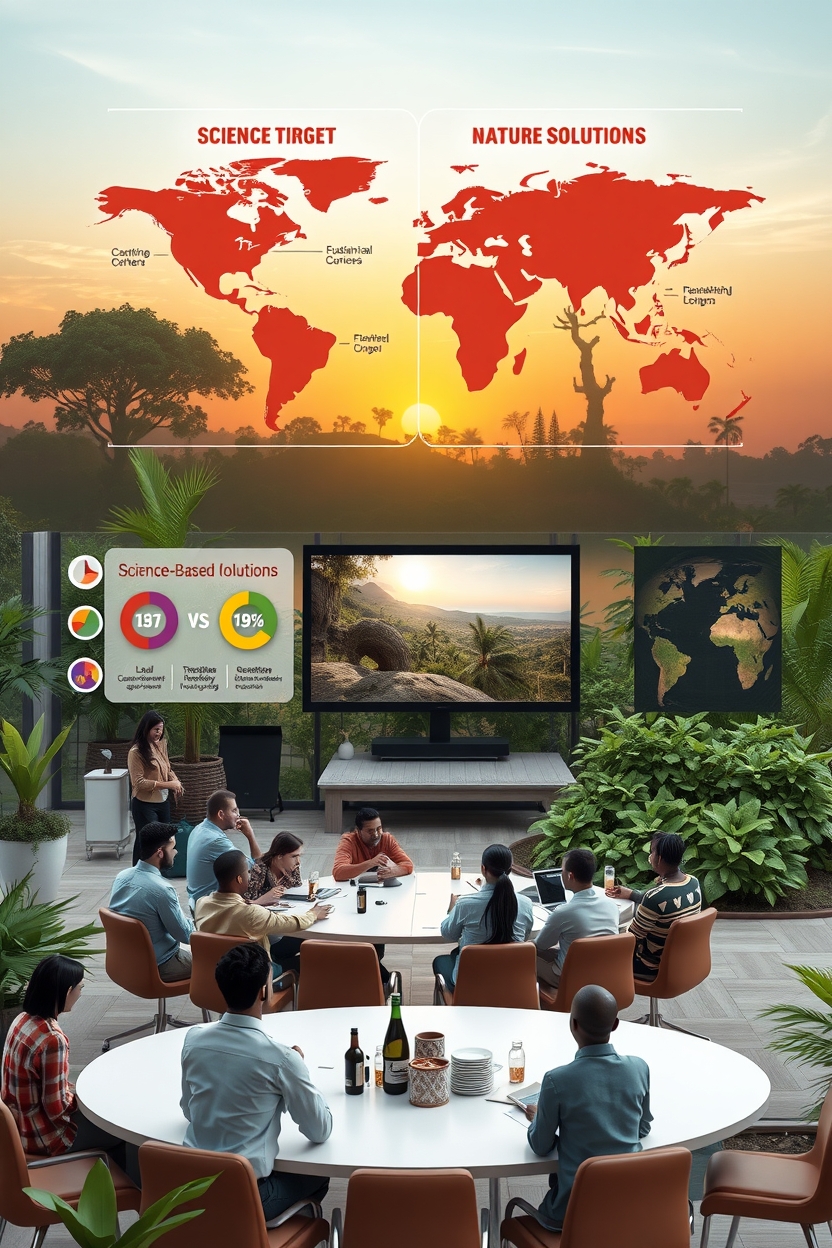
The relationship between science-based targets and nature-based solutions provides a rich area for exploration in sustainable reporting. Understanding how these frameworks differ and overlap is essential for organizations aiming to align their sustainability efforts with established standards. By examining these elements through SWOT analysis, one can unveil the strengths and weaknesses of each approach, as well as their opportunities for synergy and potential conflicts.

Science-based targets focus primarily on quantifiable climate goals that guide corporate sustainability strategies. In contrast, nature-based solutions emphasize the role of ecosystems and natural processes in achieving environmental objectives. Both frameworks are increasingly important in the context of sustainable reporting, yet they present unique challenges and advantages that organizations must navigate for effective implementation.
As businesses strive for transparency and accountability in their sustainability practices, a comparative analysis of these concepts can yield valuable insights. Recognizing the conflicts and synergies in sustainability reporting can help corporate leaders make informed decisions that advance their environmental goals while aligning with global standards.

Overview of Sustainable Reporting Standards and Frameworks
Sustainable reporting standards and frameworks provide guidelines for organizations to disclose their environmental, social, and governance (ESG) performance. They aim to enhance transparency and accountability.
Several key frameworks exist, including:
- Global Reporting Initiative (GRI): Focuses on sustainability reporting across various sectors.
- Sustainability Accounting Standards Board (SASB): Offers industry-specific guidance on financially material sustainability issues.
- Task Force on Climate-related Financial Disclosures (TCFD): Emphasizes climate-related financial risks and opportunities.
These frameworks help companies communicate their sustainability efforts. They support organizations in setting measurable goals and assessing performance over time.
Standards and frameworks vary in their approaches. Some promote a stakeholder-inclusive model, while others prioritize financial metrics. This diversity allows organizations to choose a framework that aligns with their specific needs.
The integration of science-based targets and nature-based solutions falls under these frameworks. Both aim to address climate change, but they approach it differently. Science-based targets focus on precise emissions reductions, while nature-based solutions emphasize ecosystem preservation and restoration.
These frameworks play a crucial role in guiding businesses through the complexities of sustainability reporting. They also facilitate the comparison of sustainability performance across different organizations and sectors.
Fundamentals of Science-Based Targets

Science-based targets are essential for organizations aiming to reduce their environmental impacts. They provide a clear framework for setting goals aligned with climate science. This section explores the definition and purpose of science-based targets as well as guidelines for setting and implementing them effectively.
Definition and Purpose
Science-based targets are specific greenhouse gas emissions reductions that organizations commit to. These targets are based on the latest climate science, aiming to limit global warming to 1.5 or 2 degrees Celsius above pre-industrial levels.
The purpose of these targets is to ensure that companies take meaningful action to mitigate climate change. By aligning their goals with scientific recommendations, organizations demonstrate commitment to sustainability and guide their operations toward lower emissions.
Key aspects include:
- Target Setting: Goals are determined based on a company’s emissions profile.
- Transparency: Organizations must disclose their targets for accountability.
Setting and Implementation
Setting science-based targets involves several steps. First, an organization assesses its current greenhouse gas emissions. This assessment helps identify key areas for improvement.
Next, the company chooses an appropriate target. This could be a percentage reduction in emissions or a specific timeline for achieving sustainability goals.
Implementation involves integrating these targets into operational and strategic planning. Companies often engage stakeholders and employees to ensure broad commitment.
- Monitoring Progress: Regular evaluations are crucial for staying on track.
- Adjusting Targets: Companies may need to revise their targets based on new scientific findings or operational changes.
This structured approach ensures that organizations make progress toward their climate objectives effectively.
Nature-Based Solutions Explained
Nature-Based Solutions (NbS) refer to strategies that utilize natural processes and ecosystems to tackle societal challenges. These solutions aim to provide environmental benefits while also addressing issues like climate change and biodiversity loss.
Core Principles
Nature-Based Solutions are built on four core principles:
- Sustainability: NbS should enhance and not degrade natural resources. Efforts must be made to ensure long-term viability.
- Inclusivity: Engaging local communities in planning and decision-making is essential. Their knowledge and needs should shape solutions.
- Adaptability: Solutions must be flexible to adapt to changing conditions. This helps ensure they remain effective over time.
- Ecosystem Resilience: Strengthening ecosystem functions is critical. Healthy ecosystems are better at providing services like clean water and carbon storage.
Application in Sustainability
Nature-Based Solutions find application in various areas of sustainability. They can help mitigate climate change effects, enhance water management, and improve urban environments.
For instance, mangrove restoration serves dual purposes: it protects coastlines and absorbs carbon. Similarly, urban green spaces contribute to improved air quality and community well-being.
Implementing these solutions requires collaboration across sectors. Policymakers, businesses, and communities should work together to maximize impacts.
By aligning NbS with sustainable development goals, stakeholders can amplify the benefits, making their efforts more effective and far-reaching.
SWOT Analysis of Science-Based Targets

This section explores the strengths, opportunities, weaknesses, and threats associated with Science-Based Targets (SBTs). These aspects provide insights into how SBTs align with sustainable reporting standards.
Strengths and Opportunities
Science-Based Targets leverage scientific data to set realistic and measurable goals for reducing greenhouse gas emissions. This method enhances credibility and creates accountability among companies. Many organizations adopt SBTs to demonstrate their commitment to sustainability, which can improve their public image.
An important opportunity lies in collaboration. By aligning with global climate goals, SBTs encourage partnerships among businesses, governments, and non-profits. Companies utilizing SBTs can attract investors interested in sustainable practices. Additionally, frameworks such as the Science Based Targets Initiative (SBTi) provide guidance and resources, making it easier for organizations to establish and achieve these targets.
Weaknesses and Threats
Despite their benefits, SBTs face certain weaknesses. One issue is that some organizations may struggle to implement the required changes due to resource constraints or a lack of technical knowledge. This challenge can lead to incomplete or inaccurate reporting on emissions reductions.
Furthermore, there is a threat of greenwashing. Companies may adopt SBTs while failing to implement real change, which undermines the concept’s credibility. Regulatory pressures and evolving standards can also create challenges, as organizations must adapt to new requirements continuously. Lastly, competition among companies may lead to “race to the bottom” practices, where some focus on meeting minimum standards rather than striving for impactful change.
SWOT Analysis of Nature-Based Solutions
Nature-based solutions (NbS) offer various benefits for sustainable practices while also presenting some challenges. This analysis explores the strengths and opportunities of NbS, as well as their weaknesses and threats within the context of sustainable reporting standards.
Strengths and Opportunities
Nature-based solutions provide multiple advantages. They enhance biodiversity by restoring natural ecosystems. This leads to improved environmental health and can help mitigate climate change effects.
NbS often require less maintenance than traditional infrastructure. This reduces ongoing costs, making them attractive to policymakers.
Additionally, these approaches can promote community involvement. Engaging local communities fosters a sense of ownership and stewardship of natural resources.
There are significant opportunities as well. Increased global focus on sustainability means that funding for NbS is expanding. Policymakers increasingly recognize NbS as effective strategies for meeting international climate goals.
The potential for innovative partnerships and collaborations is strong, creating a united approach to sustainability challenges.
Weaknesses and Threats
Despite their advantages, nature-based solutions face notable weaknesses. Implementation can be inconsistent across regions due to varying local practices and governance.
Limited public awareness can hinder support for NbS projects. Without community buy-in, initiatives may struggle to succeed.
There are also threats from competing interests, such as traditional infrastructure solutions that promise quicker outcomes. These solutions might overshadow NbS due to their perceived immediate benefits.
Climate change itself poses a significant threat, as more extreme weather can undermine the long-term effectiveness of NbS.
These factors require careful consideration when integrating NbS into broader sustainability frameworks.
Comparative Analysis

The comparison between Science-Based Targets (SBTs) and Nature-Based Solutions (NBS) reveals important insights into their roles within sustainable reporting standards. Both approaches aim to enhance environmental outcomes, yet they approach sustainability through different lenses.
Similarities Between SBTs and NBS
SBTs and NBS both focus on addressing climate change and promoting sustainability. They align with global environmental goals, such as those outlined in the Paris Agreement.
Both frameworks emphasize measurable targets, encouraging organizations to set specific, science-backed objectives. This structured approach facilitates accountability and transparency in reporting.
Science-based Targets and Nature-based Solutions both promote collaboration among stakeholders. SBTs and NBS rely on partnerships between businesses, governments, and communities to achieve their goals. This collective action is essential for driving meaningful progress and tackling environmental challenges effectively.
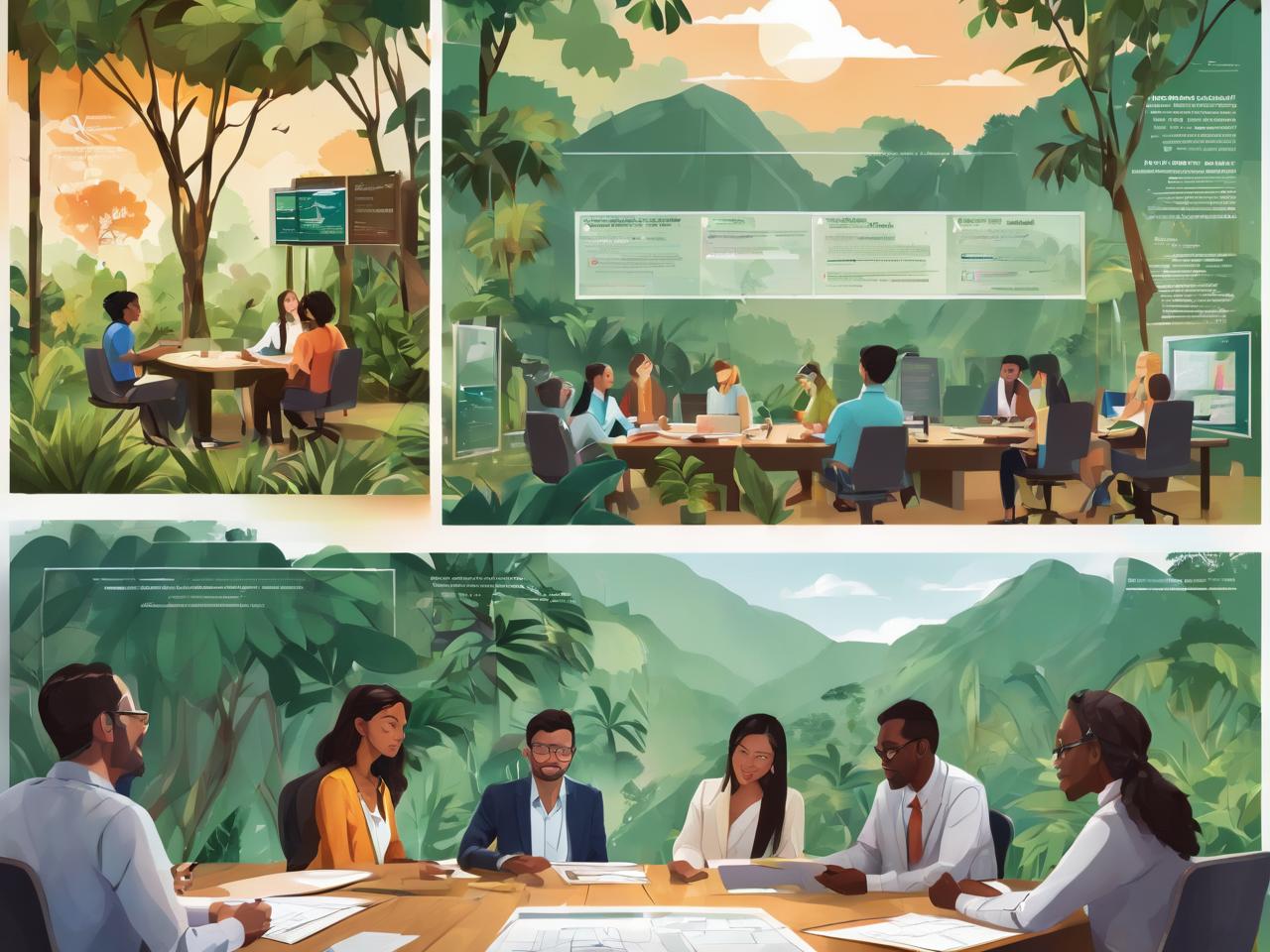
Key Differences and Distinct Features
SBTs primarily focus on reducing greenhouse gas emissions in line with scientific guidance. These targets are quantitative and time-bound, directly aimed at mitigating climate risks.
In contrast, NBS center on leveraging natural ecosystems to address environmental issues. They involve practices like afforestation, wetland restoration, and sustainable land management. NBS aim for broader ecological benefits, including biodiversity enhancement and ecosystem resilience.
Moreover, while SBTs require compliance with specific metrics and thresholds, NBS offer more flexibility in implementation. This allows organizations to tailor their approaches based on local environmental contexts and stakeholder needs, fostering more holistic environmental strategies.
Conflict Points in Sustainable Reporting
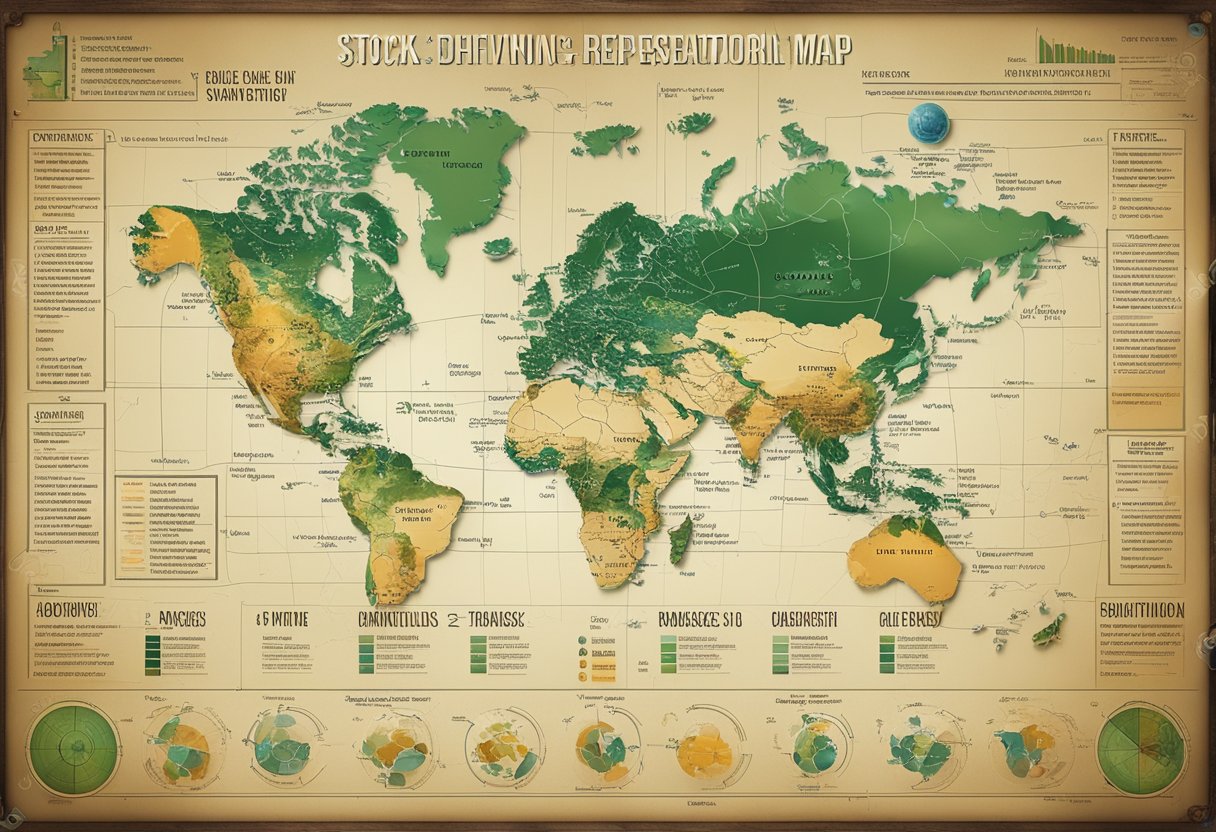
Sustainable reporting faces various challenges, particularly when comparing Science-Based Targets (SBTs) and Nature-Based Solutions (NbS). While both aim for environmental improvements, they often have different approaches, leading to conflict points.
Science-Based Targets vs. Nature-Based Solutions
SBTs focus on measurable reductions in greenhouse gas emissions aligned with global climate goals. They use scientific data to set specific targets for companies. This approach emphasizes quantitative metrics, which supplement businesses track their progress.
In contrast, NbS keenly prioritizes ecosystem services and natural processes to address environmental issues. These solutions, such as reforestation, may not have standardized metrics for success. Their qualitative nature can lead to differences in evaluation methods.
The lack of a common framework for measuring NbS can result in discrepancies when comparing performance between SBTs and NbS in sustainability reports. Companies may struggle to reconcile these differing methodologies, leading to confusion for stakeholders.
Resolution Strategies
To address the conflicts between SBTs and NbS, companies can adopt integrated reporting frameworks. These frameworks can help align goals and metrics, offering a more comprehensive view of sustainability efforts.
Stakeholder engagement is crucial. Involving diverse groups in strategy discussions ensures that there are consideration of various perspectives. This can lead to improved understanding and acceptance of different approaches.
Lastly, developing standardized metrics for NbS can facilitate better comparisons with SBTs. This involves collaborating with industry leaders and scientists to create benchmarks. Clear guidelines could promote accountability and transparency across reporting practices. Implementing these strategies can enhance the effectiveness of sustainable reporting.
Synergy in Sustainability Reporting

Sustainability reporting is increasingly evolving to create a more integrated approach that highlights the importance of both Science-Based Targets (SBT) and Nature-Based Solutions (NbS). As organizations strive for greater accountability, collaborative opportunities and beneficial overlaps are crucial for effective sustainability outcomes.
Collaborative Opportunities
Organizations can enhance their sustainability reporting by embracing collaborative opportunities between SBT and NbS. Science-based targets set measurable goals for reducing greenhouse gas emissions, aligning corporate strategies with climate science. Meanwhile, nature-based solutions focus on leveraging ecosystems to address social and environmental challenges.
By integrating these two approaches, companies can create comprehensive sustainability strategies. For instance, corporations might set SBTs while implementing NbS, such as reforestation projects, that simultaneously reduce emissions and enhance biodiversity. Collaborating with non-profits or governmental organizations can also optimize resources and expertise. This yields not only environmental benefits but strengthens stakeholder trust through demonstrable and actionable commitments.
Beneficial Overlaps
There are significant, beneficial overlaps between SBT and NbS in sustainability reporting. Both frameworks aim for long-term impact, yet approach it from different angles. While SBT focuses on reducing emissions, NbS addresses how natural ecosystems can absorb and store carbon.
Organizations can report on synergistic initiatives where emissions reduction goals are met through ecosystem restoration or conservation efforts. For example, a company might restore wetlands as part of its NbS strategy, contributing to both climate mitigation and habitat preservation. This dual reporting approach allows for richer narratives and demonstrates holistic corporate responsibility. Clear metrics can be developed to assess progress in both areas, providing stakeholders with valuable insights.
Double Materiality Map Analysis
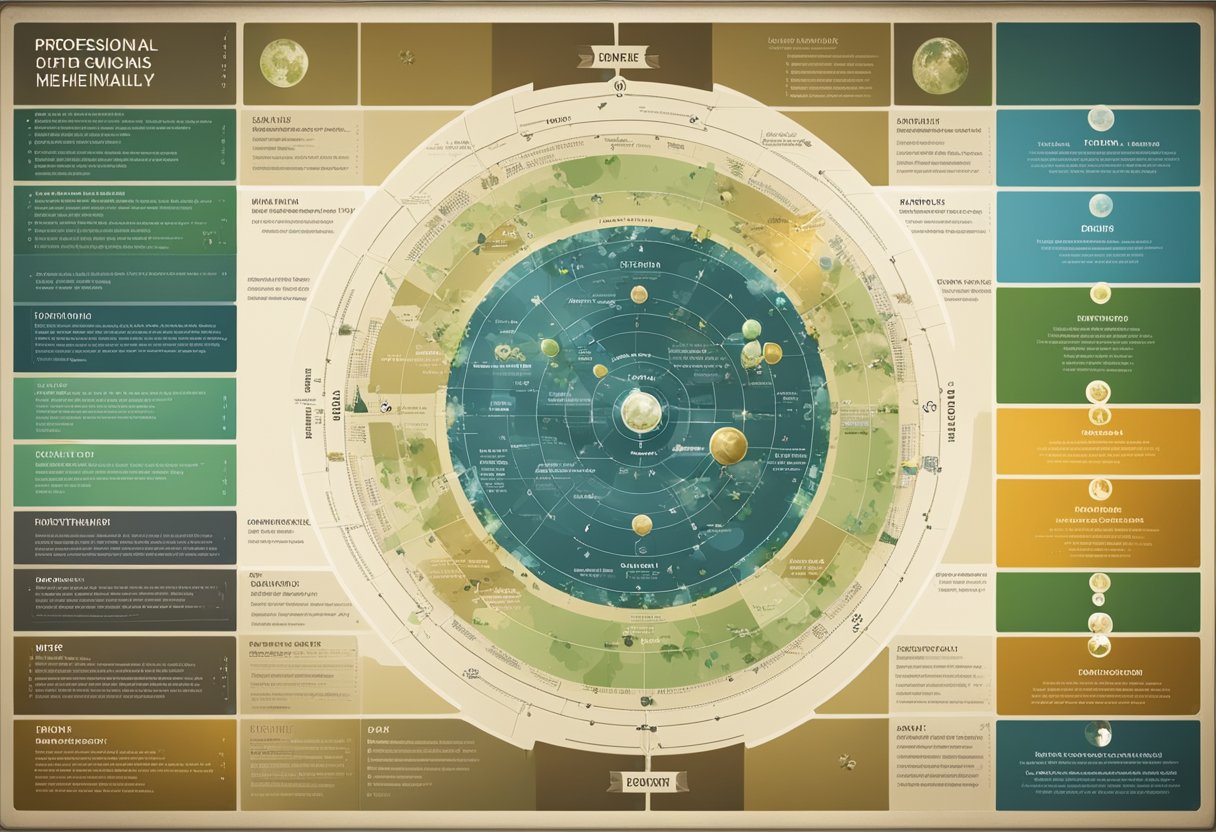
Double materiality mapping is essential for understanding the interactions between financial and non-financial factors. This analysis allows organizations to assess both their impacts on sustainability and how those sustainability issues affect their financial performance. It brings clarity to the complexities of integrating Science-Based Targets (SBTs) and Nature-Based Solutions (NBS) into sustainable reporting frameworks.
Financial vs Non-Financial Impacts
In the double materiality map, financial impacts refer to how sustainability issues affect a company’s economic performance. This includes risks like regulatory changes, resource scarcity, and potential reputational damage.
Examples of financial impacts:
- Decreased revenue due to regulatory fines.
- Increased costs from resource shortages.
- Potential losses from negative consumer perception.
Non-financial impacts focus on environmental and social outcomes. These include the effects of a company’s operations on the climate, ecosystems, and local communities.
Examples of non-financial impacts:
- Improvement in biodiversity through effective NBS.
- Community health benefits from reduced emissions.
- Enhanced public image due to sustainable practices.
Understanding both impact types is crucial for developing robust sustainability strategies.
Materiality in the Context of SBTs and NBS
When analyzing materiality for SBTs and NBS, it is vital to recognize the differences and overlaps. SBTs primarily focus on greenhouse gas emissions and their financial consequences. They set clear targets for companies to reduce emissions in line with climate science.
In contrast, NBS emphasize restoring ecosystems to address both climate change and biodiversity loss. They not only deliver environmental benefits but can also present financial opportunities, such as eco-tourism or carbon credits.
SBTs and NBS can complement each other. For instance, implementing NBS can help achieve SBTs by sequestering carbon while also providing community benefits. Companies should evaluate how both approaches can interact within their sustainable reporting frameworks, ensuring a comprehensive understanding of materiality.
Corporate Case Studies

Corporate case studies highlight both successful implementations and challenges faced by companies in adopting Science Based Targets (SBT) and Nature-Based Solutions (NbS). These examples provide insight into how organizations incorporate sustainability into their reporting standards.
Success Stories
Many companies have effectively used Science Based Targets to reduce their greenhouse gas emissions. For instance, H&M Group committed to cutting emissions by 36% by 2030 based on its climate science targets. They have implemented various strategies, including using sustainable materials and enhancing energy efficiency in production processes.
Similarly, Unilever shows how Nature-Based Solutions can complement SBT. The company has invested in restoring ecosystems for its sourcing, aiming to improve biodiversity alongside reducing its carbon footprint. Their initiatives on sustainable sourcing have led to a more resilient supply chain.
Challenges and Lessons Learned
Despite successes, companies often face obstacles in aligning SBT and NbS. Nestlé encountered difficulties with data collection for emissions reporting. Ensuring accurate metrics is crucial, but can be resource-intensive.
Additionally, Coca-Cola found integrating nature-based projects into existing strategies challenging. Conflicts between short-term financial goals and long-term sustainability targets often arose. Companies learned that strong leadership and clear communication are vital for overcoming these hurdles.
Future Trends in Sustainable Reporting
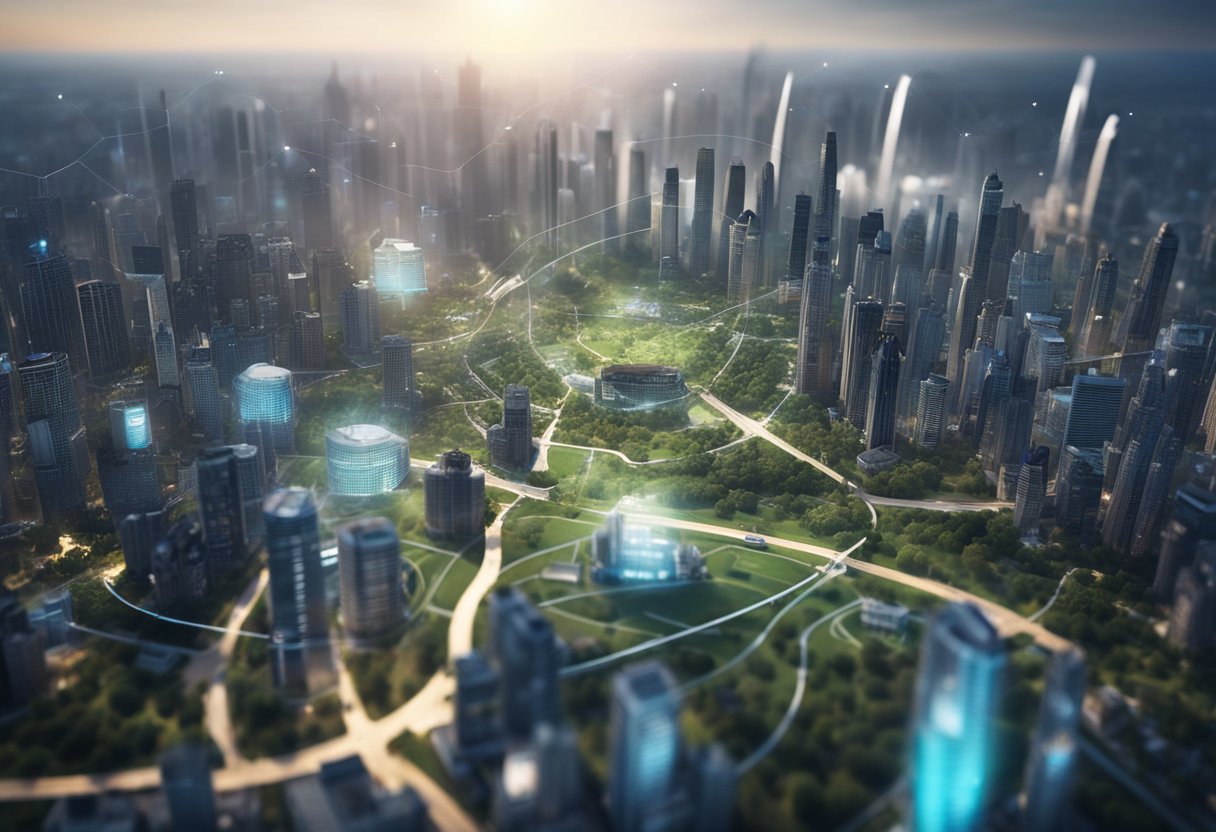
As the landscape of sustainability continues to strengthen, various trends are shaping the future of reporting. Key aspects include the development of new standards and frameworks, along with innovative approaches to target setting and solutions.
The ever-evolving Standards and Frameworks
Sustainable reporting is moving towards more standardized practices. New regulations, such as the Corporate Sustainability Reporting Directive (CSRD), demand clearer and more comprehensive disclosure from companies. This shift promotes transparency in both financial and non-financial reporting.
Additional to the CSRD, organizations are adopting the Global Reporting Initiative (GRI) and Sustainability Accounting Standards Board (SASB) frameworks. These frameworks help businesses align their reporting with global sustainability goals.
Companies are now focusing on double materiality, which considers the impact of sustainability efforts on both the business and broader societal goals. This approach allows for a more holistic view of a company’s sustainability performance.
Innovations in Target Setting and Solutions
Innovations in sustainability reporting are driven by advances in technology and data analysis. Organizations are increasingly setting science-based targets that are rooted in real-time data. This ensures that targets are not only ambitious but also achievable.
Nature-based solutions are also gaining attention, encouraging companies to incorporate environmental actions into their strategies. These solutions enhance biodiversity and combat climate change by restoring ecosystems.
Tools like carbon calculators and sustainability dashboards enable companies to track their progress effectively. As industries adopt these innovations, they foster greater accountability in sustainable practices and improve engagement with stakeholders.
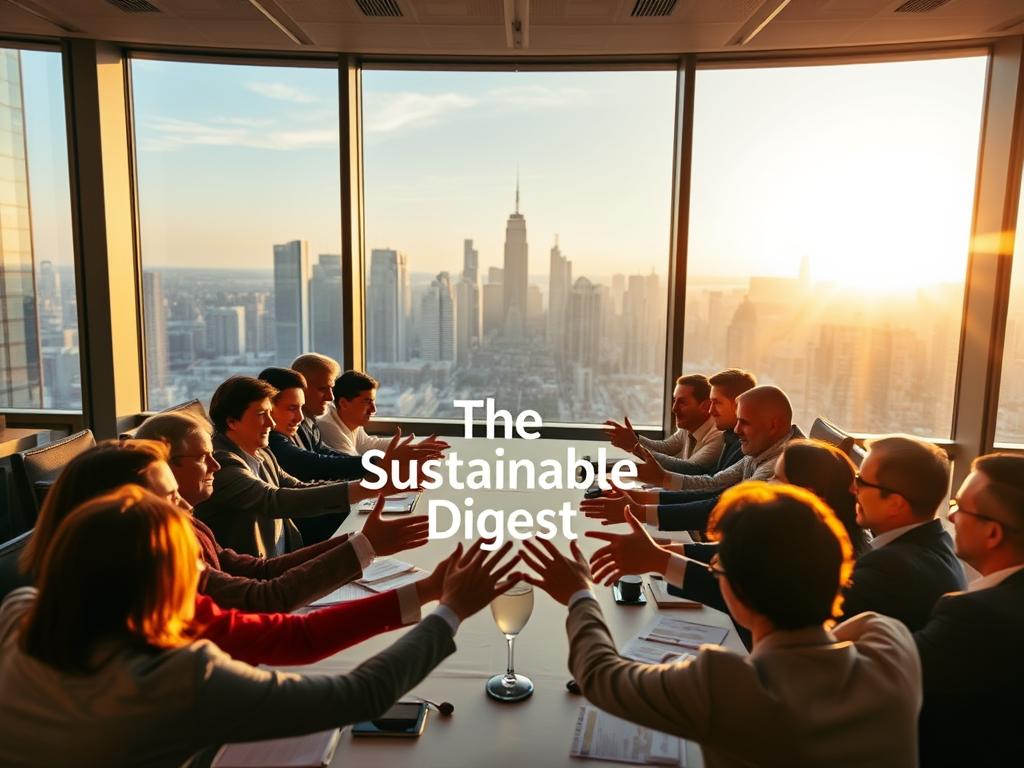
Key Takeaways
- Science-based targets and nature-based solutions provide different frameworks for sustainability alignment.
- Both approaches reveal unique strengths and opportunities in corporate sustainability strategies.
- Understanding their relationships can enhance effective reporting and accountability in environmental practices.




